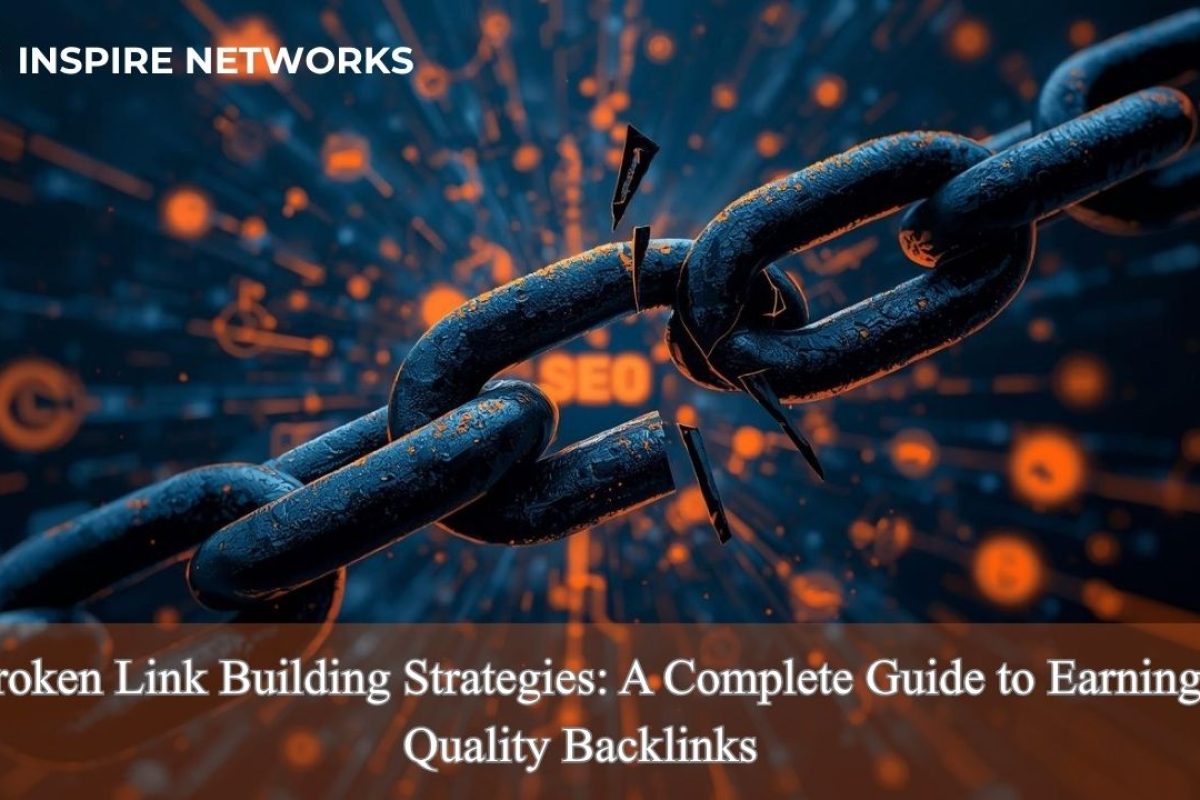Introduction
In the ever-evolving world of digital marketing, backlinks remain one of the most influential ranking factors in search engine optimization. They signal trust, authority, and relevance — the three pillars that define a website’s position in search results. Yet as competition increases, earning authentic backlinks has become increasingly challenging. Many marketers have turned to ethical, creative strategies that add real value to the web. One such method is broken link building — a tactic that transforms digital dead ends into opportunities for growth.
Broken link building is the process of finding broken or dead hyperlinks on other websites and suggesting your own relevant content as a replacement. This approach benefits both parties: the site owner repairs a poor user experience, while you gain a valuable backlink. Unlike paid or manipulative link schemes, this strategy builds credibility and fosters genuine connections within your industry.
Why Broken Link Building Matters
Broken link building is powerful because it aligns with the natural principles of good SEO. When you help another website improve its quality, you enhance user satisfaction — something search engines reward. The method is also sustainable; it doesn’t rely on tricks or loopholes but instead emphasizes mutual benefit. Furthermore, most broken link opportunities are found on authoritative sites, such as resource pages, university listings, and well-established blogs. These links carry significant domain strength, meaning each one you earn can make a measurable difference in your organic rankings.
Another advantage is relationship building. Each outreach attempt opens a door to potential collaborations, guest posts, or partnerships. Even if a site owner declines your suggestion, your professional communication often leaves a positive impression, setting the stage for future engagement.
Identifying Broken Links in Your Niche
The first step in any broken link building campaign is research. Identifying broken links that are both relevant to your content and hosted on credible domains is crucial. SEO tools such as Ahrefs, SEMrush, and Moz simplify this process by generating lists of broken backlinks on competitor websites or within topic-specific domains. By analyzing these reports, you can pinpoint where opportunities exist and understand what type of content once earned those links.
Marketers without access to premium software can still find opportunities through manual searches. Resource pages, industry directories, and educational websites often contain outdated references or dead links. Searching for these using advanced Google operators can be effective. Once you locate potential prospects, you can analyze them for quality and topic relevance. Prioritize pages that have strong domain authority, are contextually aligned with your niche, and have an engaged readership.
Creating the Perfect Replacement Content
Finding broken links is only half of the strategy. To earn the backlink, you need a strong piece of content that naturally fits as a replacement. The key is to match the intent and quality of the original source while offering something more useful or updated. If the original link pointed to a guide, tutorial, or statistics page, create a modern, comprehensive version enriched with visuals, recent data, and clearer explanations.
This process often requires reviewing multiple outdated resources and combining their strengths into one cohesive, valuable piece. The best replacement content does not merely replicate the old page — it enhances it. Incorporate original research, interactive elements, or downloadable resources to make your version stand out. When your content genuinely improves the reader’s experience, webmasters are far more likely to accept it as a replacement.
The Art of Outreach and Relationship Building
Once your content is ready, the next step is to connect with site owners or editors who manage the pages containing broken links. Effective communication is about offering value rather than asking for favors. The focus should always be on how your content improves their website’s quality. Personalized, respectful outreach tends to yield higher success rates because it demonstrates that you’ve taken the time to understand their content and audience.
Building rapport with webmasters can turn a single link opportunity into a long-term professional relationship. Even if your suggested replacement isn’t used immediately, maintaining polite follow-up conversations can lead to future collaborations such as guest posts, mentions, or joint projects. In link building, relationships often matter as much as results.
Tracking and Measuring Your Progress
Monitoring your efforts ensures you understand what works and what needs improvement. Keep a record of the websites you contact, the content you propose, and the responses you receive. This allows you to refine your strategy and focus on the outreach methods that deliver the best return.
Over time, evaluate how the new backlinks affect your organic visibility and referral traffic. Tools like Google Analytics and Search Console can show which links drive meaningful visitors to your site. Remember that link building is a long-term effort; the goal is not instant rankings but sustained authority and credibility.
Scaling Broken Link Building with Tools and Automation
As your process becomes more efficient, automation can help scale your results. SEO and CRM tools can streamline prospecting, outreach management, and reporting. Platforms like BuzzStream or Pitchbox help organize contact lists and track communication without losing personalization. Email discovery tools such as Hunter.io or Snov.io assist in finding accurate contact information quickly. Combined with AI-based writing assistants, these tools reduce repetitive work, allowing you to focus on strategy and creativity.
However, automation should never replace authenticity. While tools save time, each interaction must still feel personal and thoughtful. Automated messages or irrelevant outreach can harm your reputation and reduce response rates. Balance efficiency with genuine engagement to maintain credibility in every campaign.
Common Pitfalls to Avoid
Broken link building may seem straightforward, but several mistakes can limit its effectiveness. Offering irrelevant or low-value content is one of the most common issues; your replacement must align closely with the original topic. Another pitfall is neglecting personalization — generic communication is often ignored. Additionally, many marketers focus on quantity instead of quality, chasing hundreds of weak links instead of a few high-authority ones.
Patience is also essential. Not every outreach will lead to a backlink, but consistency builds momentum. Avoid sending multiple reminders or aggressive follow-ups, as they can damage potential relationships. Instead, focus on creating genuinely helpful resources and building trust over time.
Conclusion
Broken link building remains one of the most effective and sustainable link-building methods in modern SEO. It’s not about exploiting gaps in the web — it’s about filling them with value. By identifying dead links, crafting superior replacement content, and building authentic relationships with site owners, marketers can transform lost opportunities into measurable growth.
This approach benefits everyone involved: users enjoy better experiences, webmasters improve their site integrity, and you earn authoritative backlinks that strengthen your domain’s presence. As search algorithms increasingly reward relevance and trustworthiness, strategies like broken link building will continue to play a vital role in digital marketing success.
In essence, broken link building is more than an SEO tactic — it’s a philosophy of collaboration and continuous improvement. When executed thoughtfully, it turns outdated content into renewed opportunity, helping your brand stand out in a crowded digital landscape.








